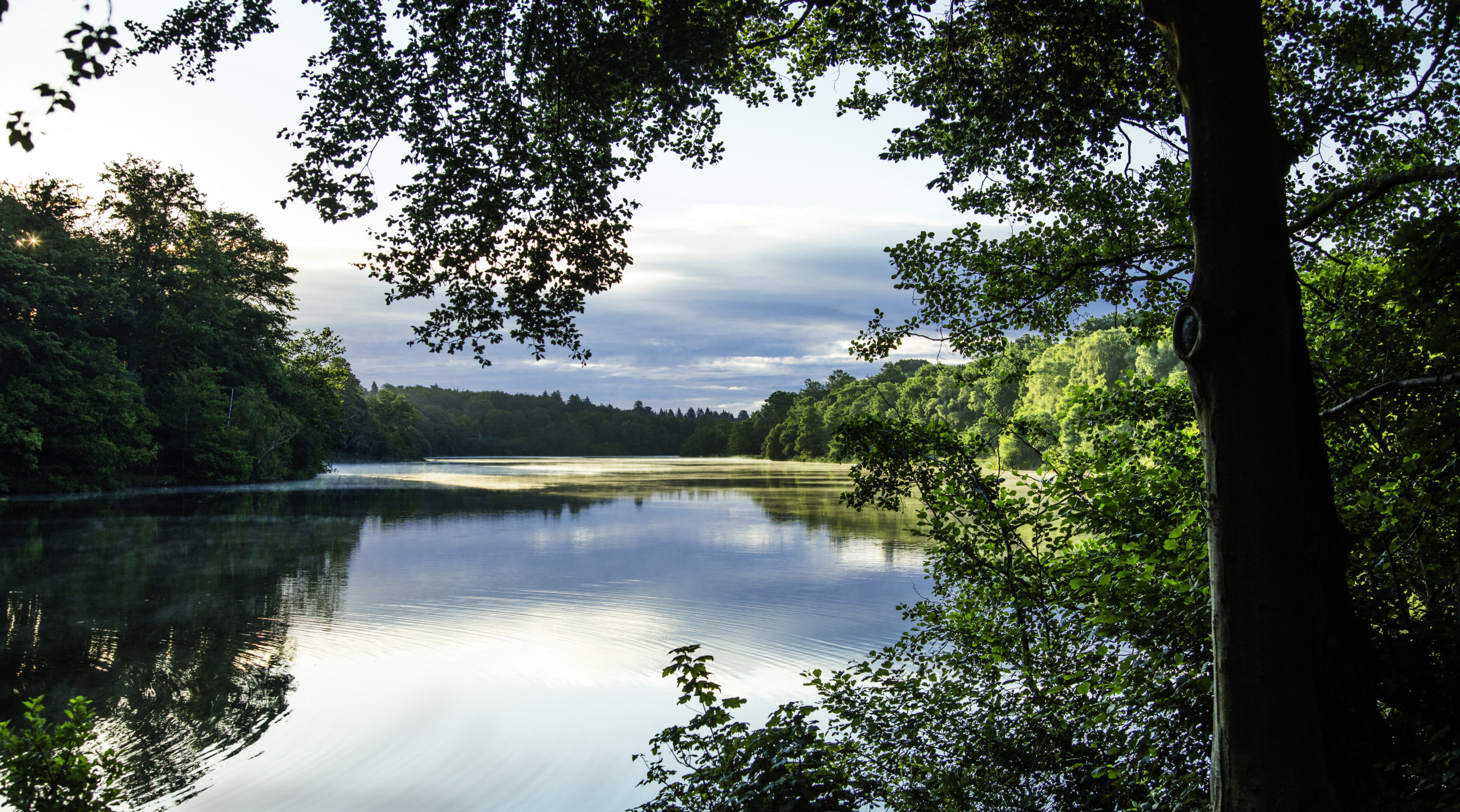
Wildlife
The Windsor Estate provides habitats for a vast array of fauna and flora – including birds, bats, insects, fish, and rare fungi and lichens.
Here are a few of the types and species that we work to conserve.
Amphibians
We have five species of amphibians. The frogs and toads are fairly common in some ponds or lakes, the newts are harder to see because of the habitats and behaviour.
Amphibians
- Common frog
- Common toad
- Smooth newt
- Palmate newt
- Great crested newt

Bats
Bats use trees and buildings for roosting, as well as bat boxes we have provided to help us study their populations.
Bats
The habitats in Windsor Great Park and its woodland provide lots of natural insect food and sheltered places for bats to feed. Some of the eleven species present include:
- Noctule and serotine bats
- Brown long-eared bat
- Daubenton’s bat
- Pipistrelle bat

Birds
The ancient trees within Windsor Great Park and the wider Estate provide a variety of habitats, offering ideal nesting sites for a number of interesting birds – including tawny and barn owls, and the green and great spotted woodpecker.
Birds
Red kites soar overhead and kestrels hover in search of prey in the long grass. The mistle thrush is numerous across the park, and in winter can be seen feeding on berries of its namesake the mistletoe plant, which grows partially parasitic on Lime and other trees.
If you are interested in ground-nesting species such as nightjars and Dartford warblers, the young plantations and rich heathland of Swinley Forest – part of the Thames Basin Heaths Special Protection Area – is a prime location in which to spot them.
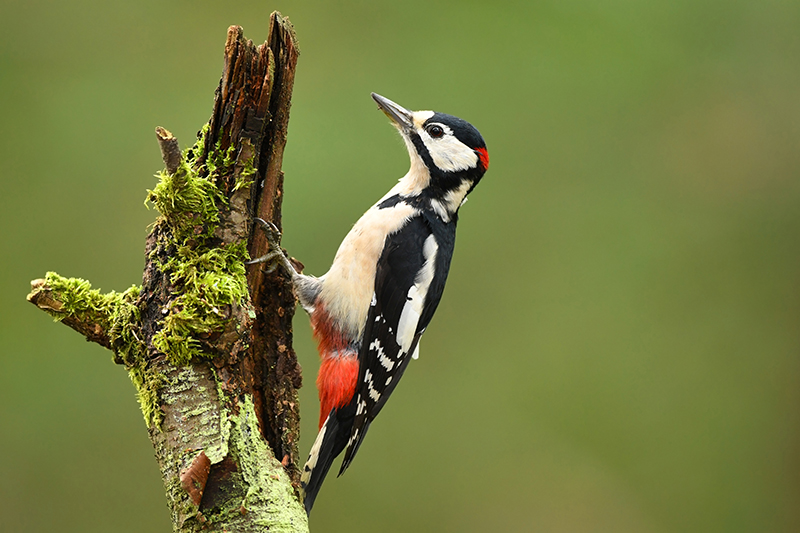
Birds
There is also a great deal of bird life to be seen in our wetland habitats. Herons can often be seen on the lake at Virginia Water – and Mandarin ducks, coots and kingfishers can be found in the southern streams that feed into it. White egrets have become more numerous, while many migratory wildfowl flock to Windsor Great Park in winter.
Woodland and parkland birds
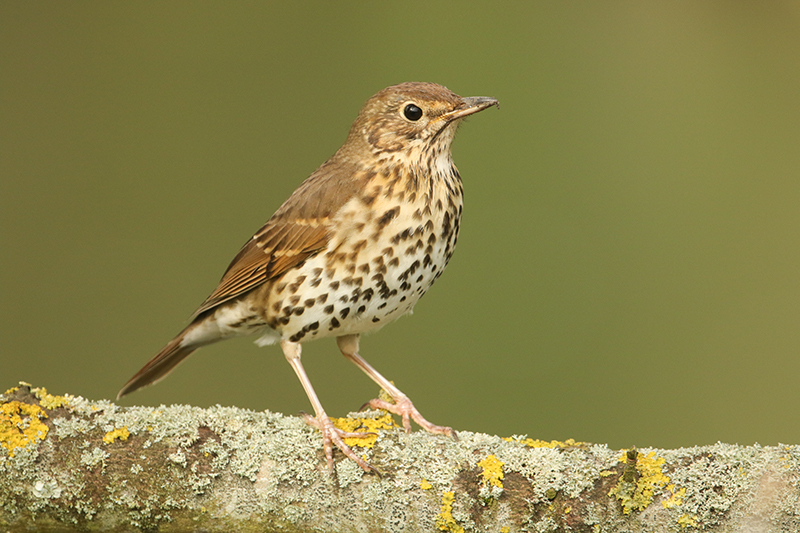
Woodland and parkland birds
- Ring-necked parakeet
- Kestrel
- Red Kite
- Buzzard
- Raven
- Jackdaws
- Mistle thrush
- Song Thrush
- Fieldfare
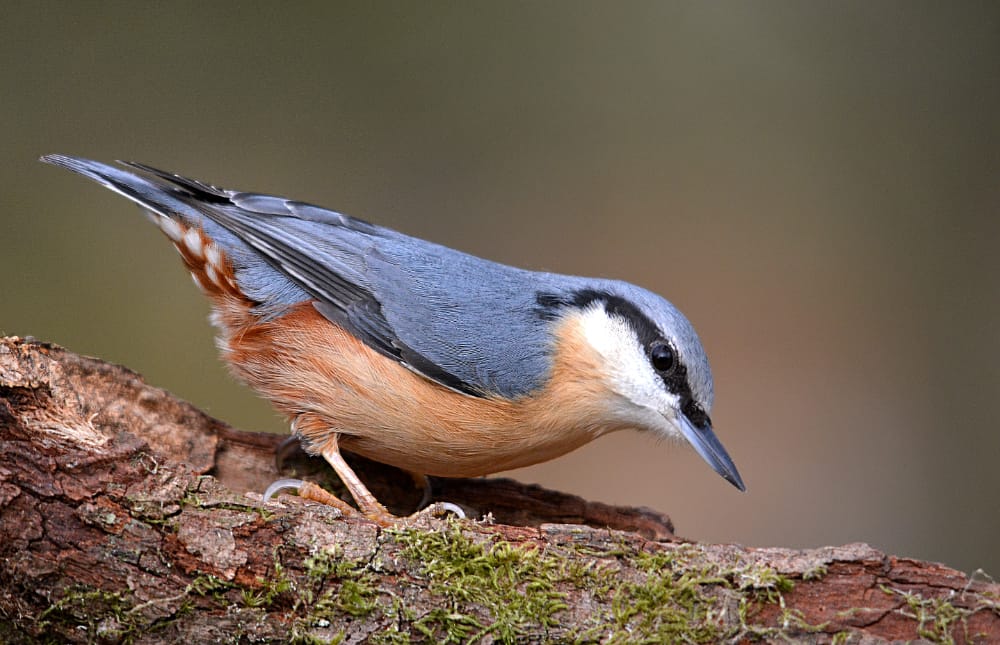
- Chiffchaff
- Tawny owl
- Redwings
- Barn owl
- Little owl
- Blackcap
- Great spotted woodpecker
- Nuthatch
- Treecreeper
Lakes, ponds and wetland birds
Lakes, ponds and wetland birds
- Grey heron, little egret
- Cormorant
- Great crested grebe, little grebe, coot and moorhen
- Ducks such as the mallard, mandarin, and tufted duck, as well as less common species like pochard, gadwall, shoveler and teal
- Geese, including the greylag, Egyptian and Canadian
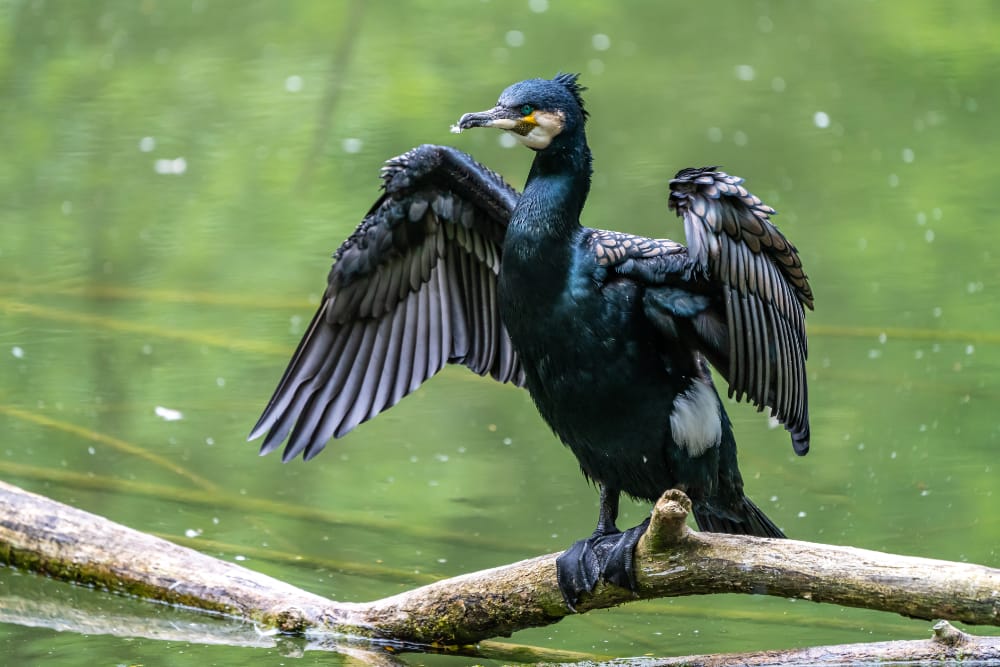
Forest and heathland birds

Forest and heathland birds
- The Dartford warbler, woodlark, stonechat, crossbill, and woodcock can be seen all year round
- The nightjar, tree pipit, cuckoo, redstart, and hobby can be found in spring and summer
Fungi
Fungi are essential parts of our world and help habitats to function. Fungi act as ‘ecosystem engineers’. They help trees and flowers to grow through their underground networks entwined with roots in the soil, they recycle the nutrients from fallen leaves and branches and provide food for animals and insects.
Fungi
They also create valuable habitats on the old trees, such as hollow branches, or the softer wood which woodpeckers and other creatures can hollow out.
Windsor is a nationally important site for rare species and assemblages of fungi. Over 1,000 species of macro-fungi have been recorded, 250 of which are rare species. In fact, there are 43 rare species of fungi that are confined almost entirely to Windsor. These can flourish in the ancient soils around old tree roots or on undisturbed grasslands with healthy soils.
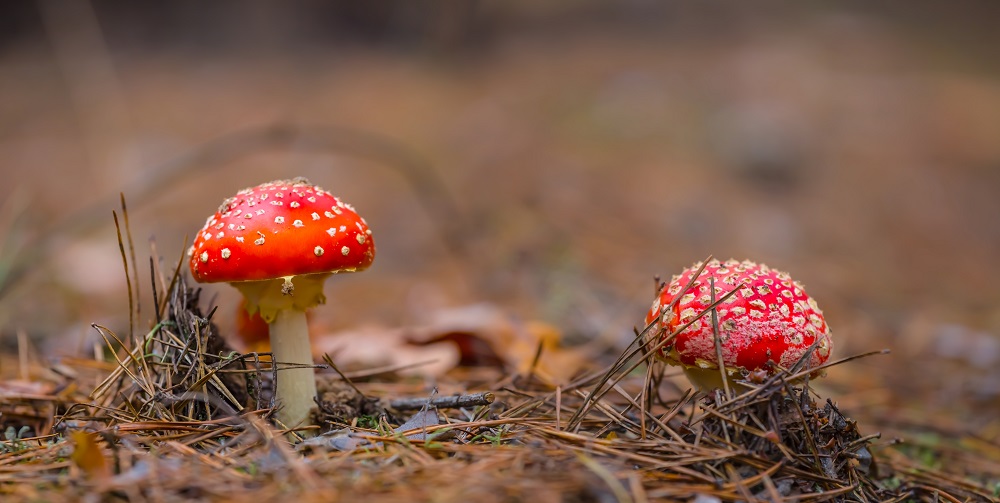
Fungi iuuiyjihjuikj
No picking is allowed as the fungi are sensitive to damage, and we want them to be left for others to enjoy, and to fulfil their ecological functions. They are specially protected within the SSSI areas. They make wonderful subjects for photography or artwork, especially where they occur amongst the autumn colours.
The general term ‘fungi’ refers to all manner of types, which are sometimes referred to as mushrooms, toadstools, puffballs, brackets, corals, moulds as well as other terms.
Insects
Windsor Great Park is one of the best places to see and study rare and specialised insects. As they are legally protected we support careful study and photography, but we do not allow any collecting of specimens.
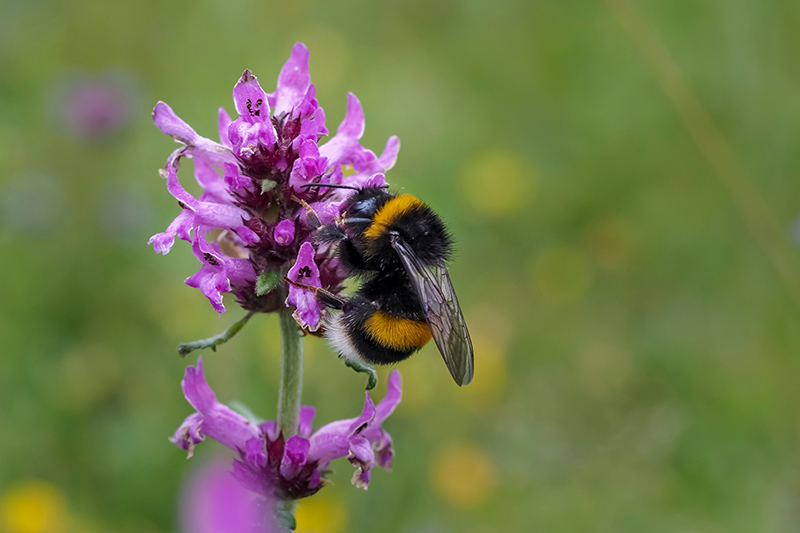
Insects
We also see more common species, including:
- Bumblebees
- Millipedes and centipedes
- Woodlouse
- Hornets
Beetles
Windsor Great Park is home to nearly 2,000 species of beetle, many of which are endangered, vulnerable or near-threatened.
Beetles
Our most impressive species is the large stag beetle, which is seen during mid-summer, being most active flying at dusk. The large maggot-like larvae live amongst the decaying roots of old trees for many years before emerging as an adult. Some of our rarer beetles are not often seen due to their secretive life cycles – these include the violet click beetle, black click beetle, variable chafer, and oak click beetle.

Butterflies & day flying moths
Butterflies and moths depend on particular plants for their caterpillars to feed on, and an abundance of nectar sources which the adults feed on. A selection of the species you can see in Windsor Great Park and the wider Estate are shown below.
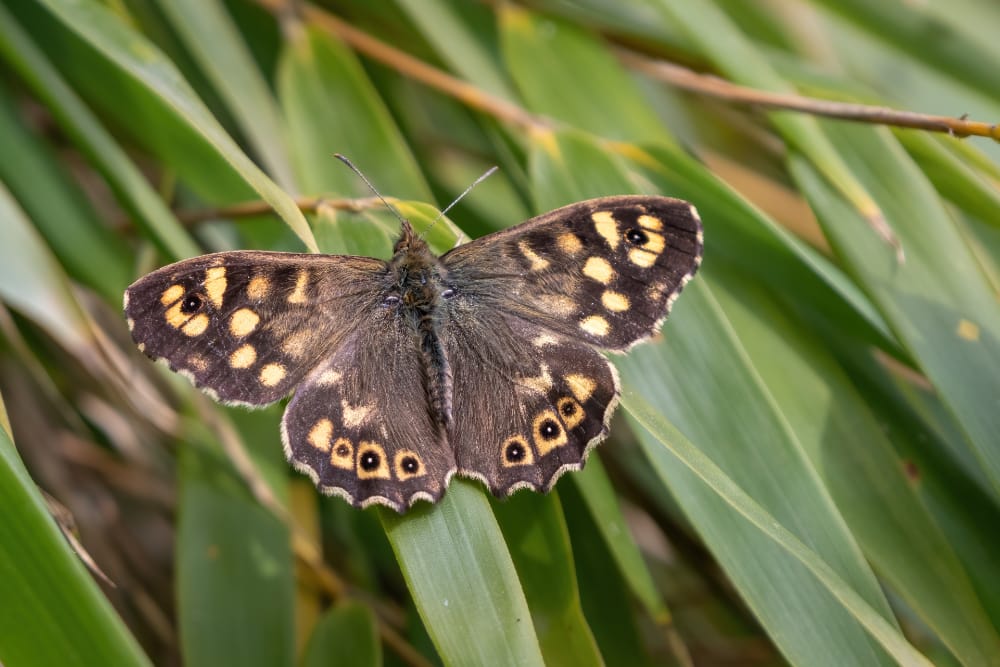
Woodland butterflies & day flying moths
- Orange-tip
- Marbled white
- Small heath
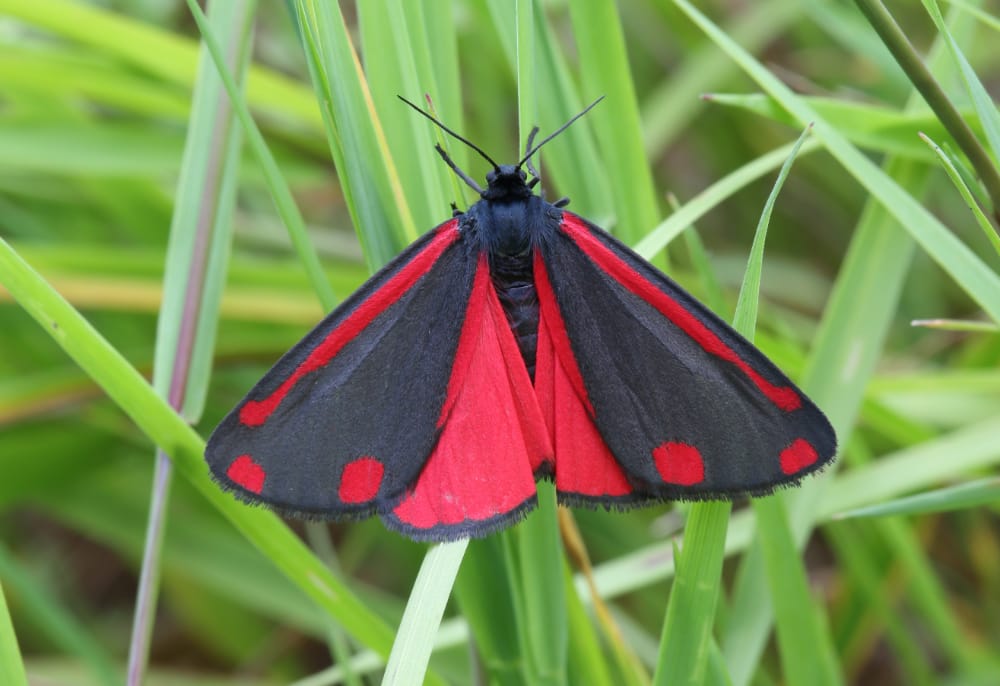
Grassland butterflies and day flying moths
- Orange-tip
- Marbled white
- Small heath
- Small copper
- Large skipper
- Common blue
- Cinnabar moth
- Burnet moth
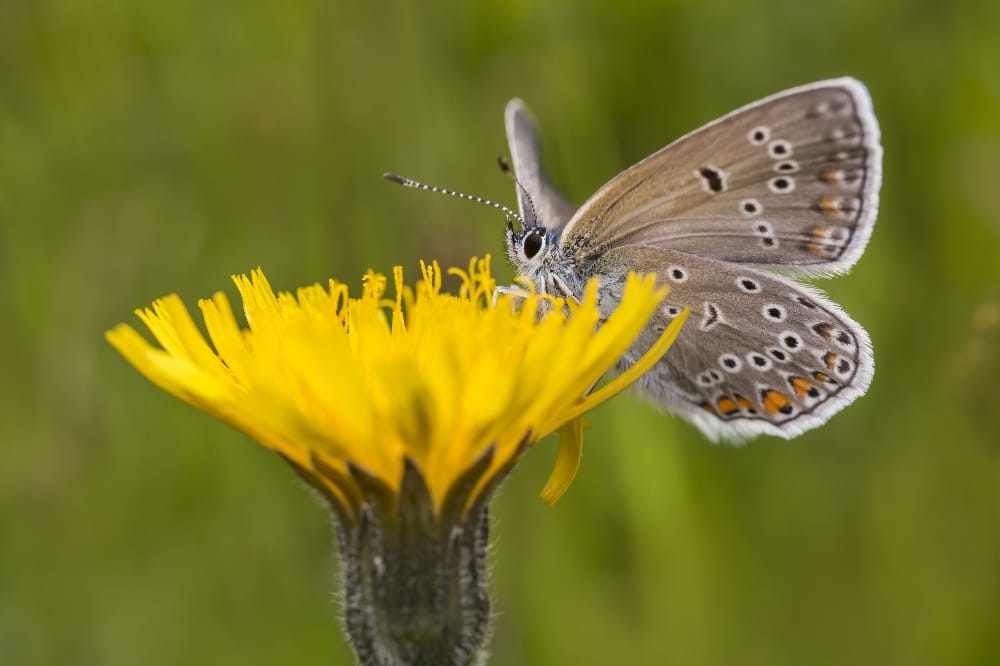
Heathland butterflies and day flying moths
- Green hairstreak
- Silver-studded blue
- Grayling
- Small heath
Decaying wood insects
Our position at the top of the ‘Index of Ecological Continuity’ indicates a continuity of high-quality dead wood habitats from ancient times to the present.
Decaying wood insects
Insects thrive in old trees and decaying wood – particularly specialist beetles and flies.

Dragonflies
The Estate is home to around 26 species of dragonfly, some of which can be very abundant. Our diversity of wetland habitats – from common ponds to heathland pools and mires – supports species that are also common and rare.

Dragonflies
They depend on the water through their larval stages and then fly as colourful adults through the spring and summer. Look out for the large emperor dragonfly in the Park, whilst the very long golden-ringed dragonfly is more often seen near forest streams. The nationally uncommon small red damselfly occurs at heathland pools and boggy areas in the forests.
Flies
Over 1,800 species have been found here including the unique royal splinter crane fly. This insect is only found here, and very little is known about its habitat preferences. Its name identifies its dependence on the Royal Landscape.
Flies
The high number of specialist flies found here is one of the reasons why The Windsor Estate have been identified as an SSSI, and surveys confirm that it continues to be of national importance.
Specialist studies of flies have shown that much of the interest is due to the rich array of decaying wood microhabitats present to support the life cycles of the different species.
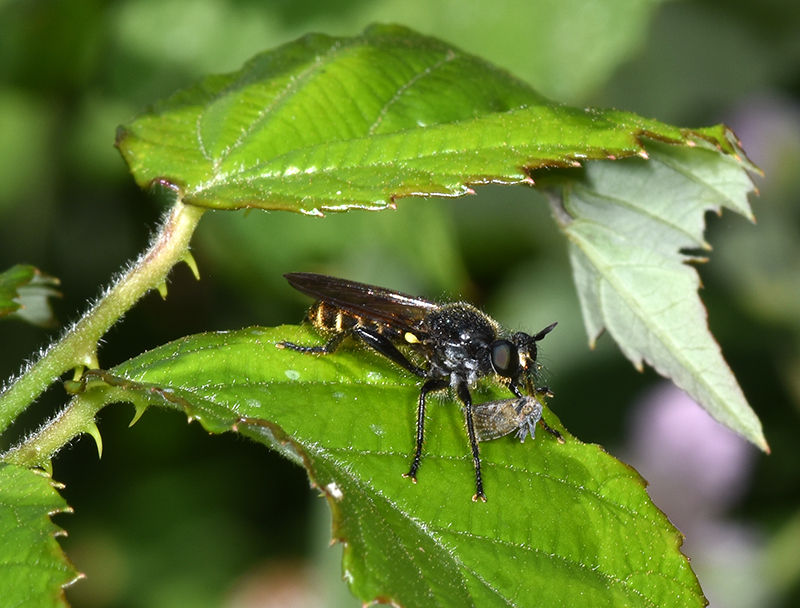
The Queen’s executioner beetle
In 2010 one of our rarest and most endangered beetles was given the title ‘Queen’s executioner beetle’ in a competition to name ten of Britain’s rarest species. It was formerly only known by its scientific name of Megapenthes lugens.

The Queen’s executioner beetle
This species is generally associated with ancient hunting forests where there are populations of old Beech trees on which it depends. In recent times it has only been found at Windsor Great Park.
The name’s royal link with Windsor is clear, but the ‘executioner’ aspect represents the fact that the beetle’s larvae eat the larvae of other insects. Its black colour is also a link to the traditional hood of an executioner!
Fish
We have numerous freshwater fish in our lakes – including pike, bream, tench, roach, perch and carp. Smaller ponds and streams may support ‘tiddlers’ like sticklebacks. Some lakes have managed fish stocks for our angling members, and other populations are naturally sustaining.
Fish
Fish populations contribute to the food chains of our wetlands in the Park.
Fish can be active predators of frog tadpoles and young newts, but toad tadpoles tend to be less palatable and often survive better alongside the fish in our larger ponds.
Many of our water birds feed on fish of various sizes. The kingfisher dives for small fish from perches around the edges of ponds and lakes, whilst the great crested grebe can dive and swim underwater to hunt fish.

Fish
The cormorant is much larger and can dive deeper and catch larger fish, whilst the grey heron stalks in the margins searching for fish to strike at using its long neck and spear-shaped beak.
Other animals which often hunt for fish are the grass snake and the mink, both of which are excellent swimmers.
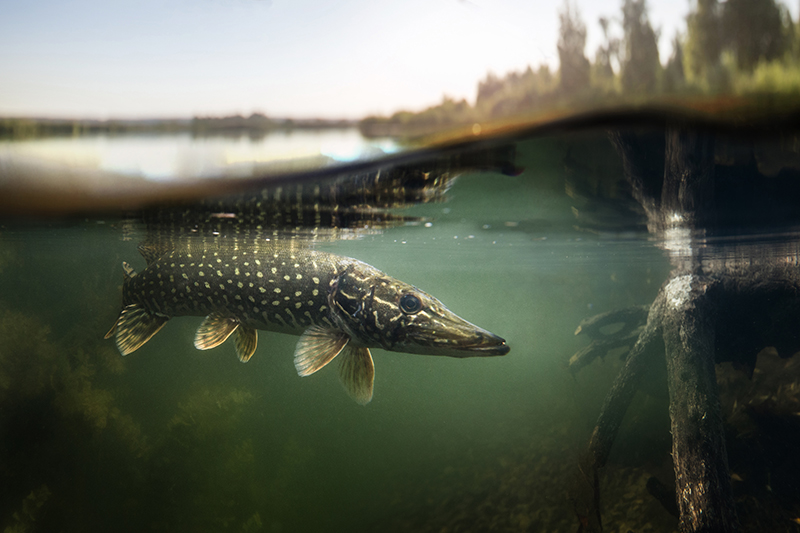
Fish
Fallen tree branches and patches of water plants provide cover and shelter for fish to hide from their predators and can help to even up the contest between predators and prey.
Some of our fish are very long lived. We believe that some of the eels and carp in our lakes are likely to be at least 50 years old!
Lichens
Although pollution has affected lichens country-wide, we still have some very rare examples growing on the bark and exposed wood of our oldest trees.
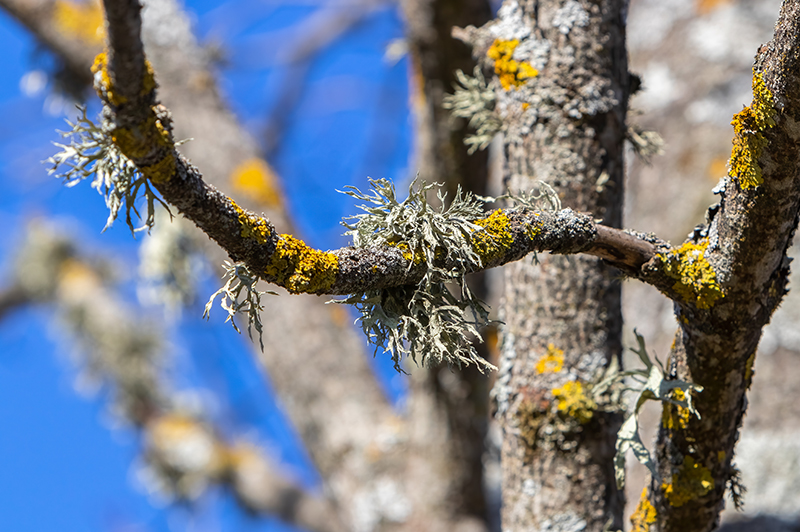
Lichens
These species are good indicators of air pollutants such as nitrogen and ammonia, but we hope that the rarest species can thrive again as air quality improves.
Reptiles
We have four species of reptile in the Park, all have legal protection. They favour open habitats – especially areas of heather, grasses and gorse scrub – where they depend on warm sunshine.
Reptiles
- Adder – not often seen due to its secretive behaviour. The adder has an attractive ‘zig-zag’ pattern along its back. They have become much scarcer nationally but we do have small populations on our Estate. If you see one do not approach and leave it to move away naturally. They can be enjoyed from a safe distance, and dog walkers please review this information.
- Grass snake – common near ponds and streams – a very good swimmer that often hunts for frogs and small fish.
- Viviparous lizard – sometimes seen scurrying across paths.
- The rarely seen slow-worm
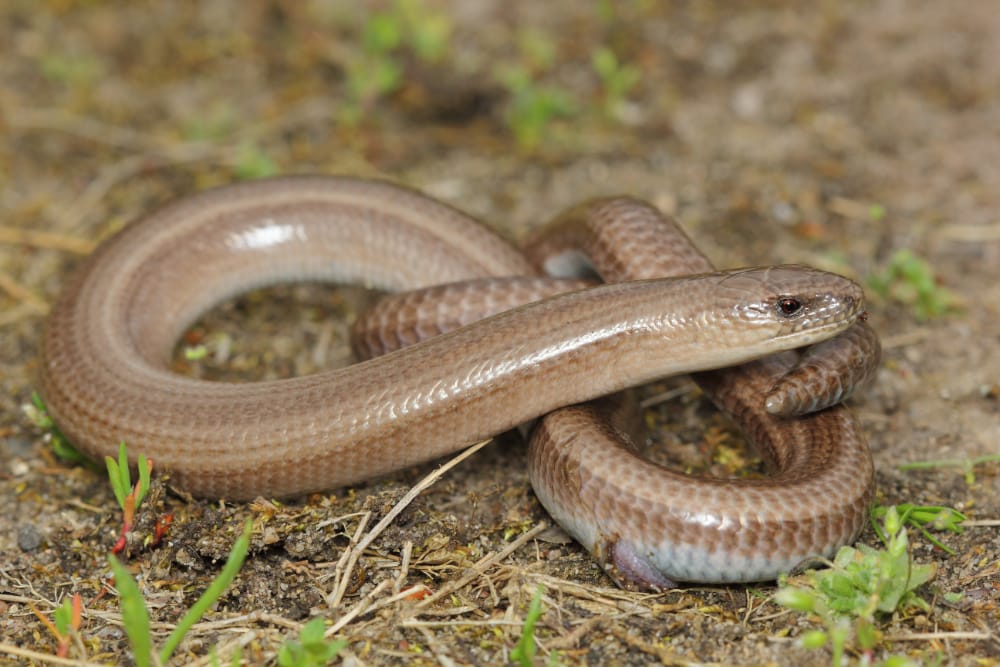
Mammals
In addition, Windsor Great Park is also home to a number of other species, including muntjac and roe deer, badgers, moles, rabbits and hares.
Strictly speaking, the red deer and rare breed cattle aren’t wild, but they are important parts of the Estate’s ecosystem.

Red deer
Perhaps one of the best-known species that live in Windsor Great Park is our herd of red deer, which are resident in the Deer Park adjacent to the Long Walk. The current herd was established from two stags and 40 hinds, originally from the Balmoral Estate, which were introduced in 1979 by The Prince Philip, Duke of Edinburgh.
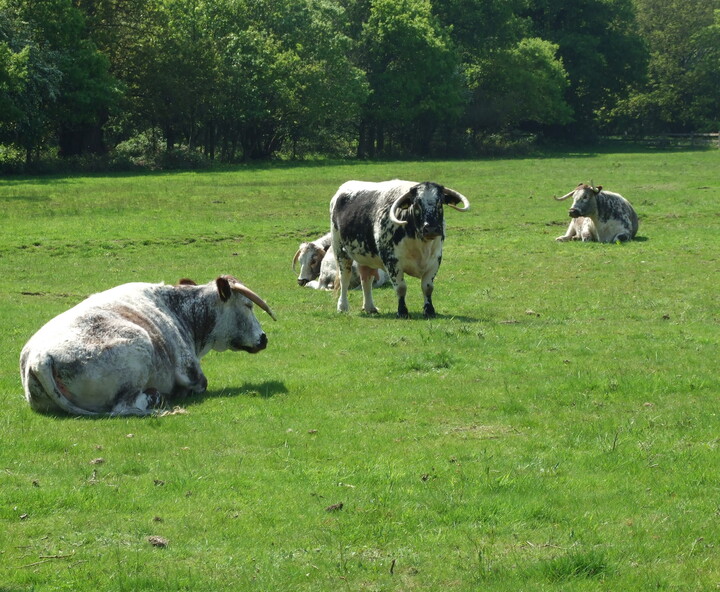
Rare breed cattle
If you visit the fields and woodland near Rangers Gate, close to Stag Meadow, you may also be able to catch a glimpse of our herd of long horn cattle – these magnificent animals are being used to restore more natural grazing systems in Windsor Great Park and the wider Estate.
Explore our habitats
Dig deeper into the habitats, the wildlife they support and the work we do to preserve them for the benefit of the nation.
Conservation & Stewardship
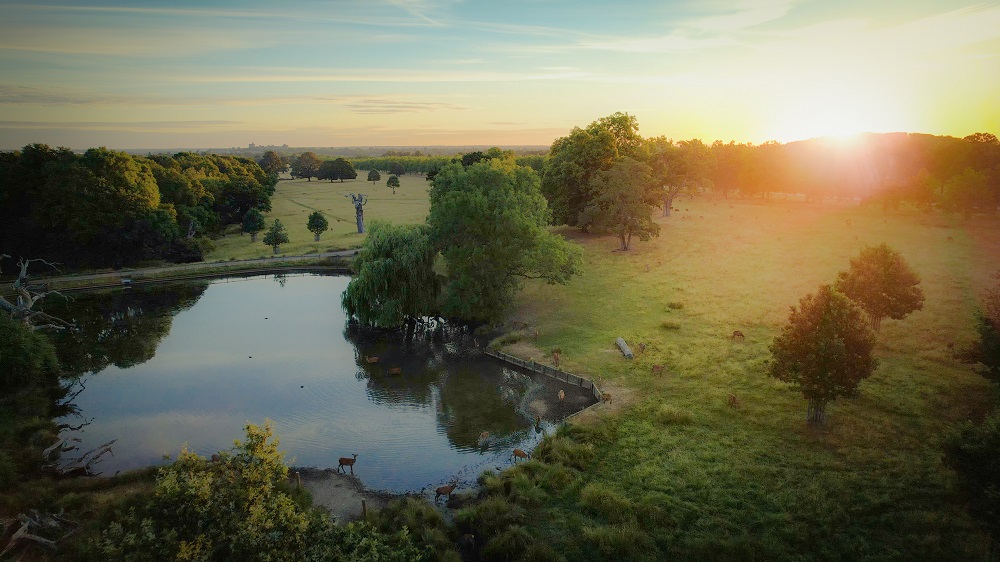
Woodland, parkland and wood pasture
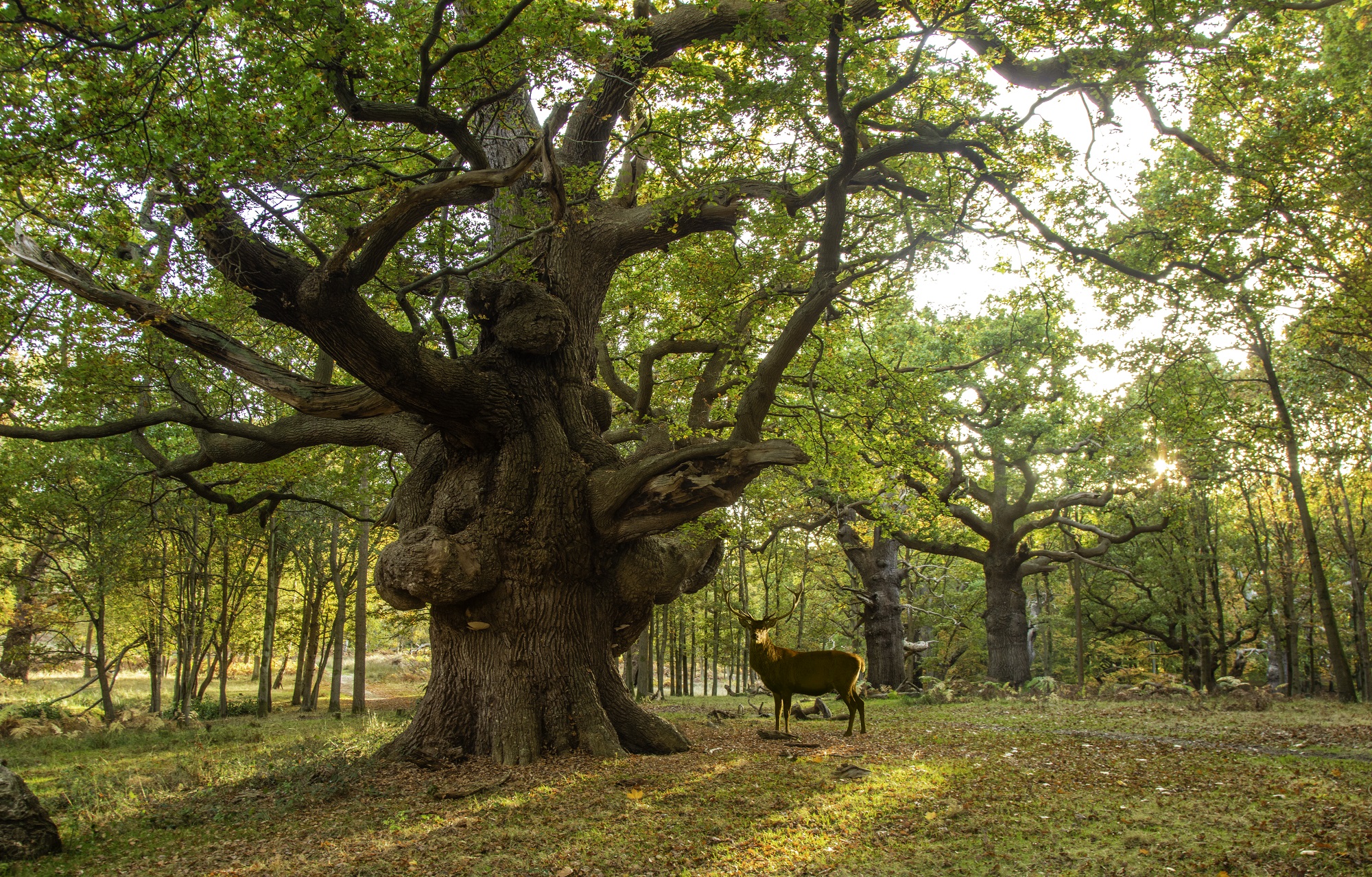
Grassland and heathland

Lakes, Ponds and Wetlands
